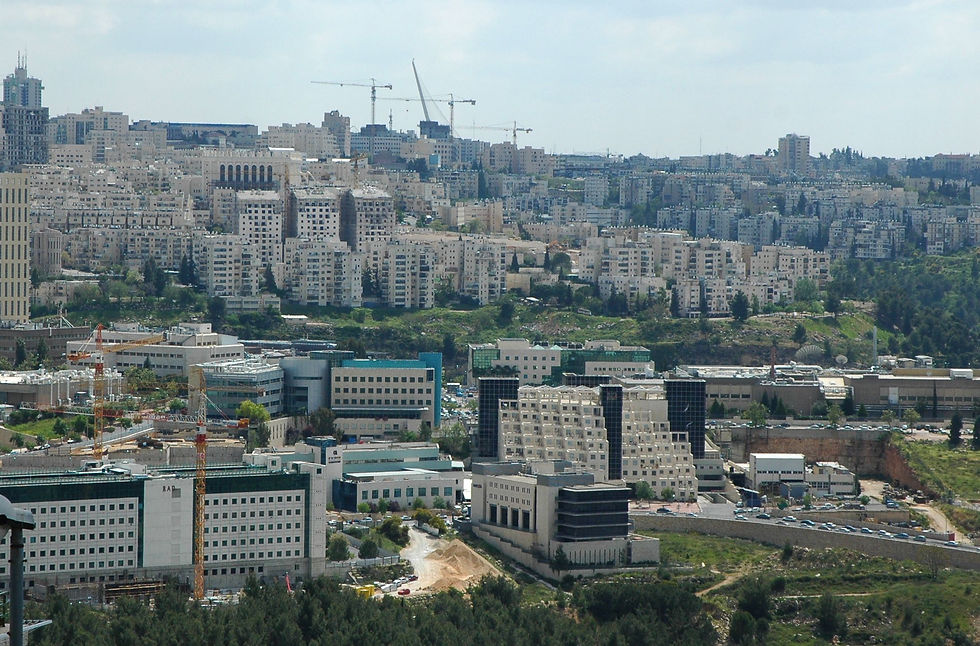2012 Israel Real Estate Review
- Gedaliah Borvick

- Dec 24, 2012
- 3 min read
Updated: Dec 20, 2018

The Macro Picture: Israel
2012 has been a busy year for Israel residential real estate. In response to the famous 2011 “Tent City” demonstrations against the high cost of living and the lack of affordable housing, Prime Minister Netanyahu appointed the Trajtenberg Committee to address the complaints and make recommendations. This past June, the Trajtenberg Committee recommended – and the government approved and implemented this proposal – to force Minhal, the Israel Land Authority, to sell enough land over the next five years to construct 187,000 new apartments.
This was an excellent move, as the government properly identified the source of the rising prices: simply put, there are not enough apartments being developed to address the huge housing demand. This shortage of new housing units can be traced to Minhal’s historically slow pace of selling government land for development, which had deliberately been done to create strong demand and increase government revenue. We are starting to see the positive results of this new strategy: there has been an increase in Minhal land sales and, consequently, many new residential projects are being developed across the country.
In October, the Bank of Israel (or “BOI”) changed housing lending requirements to help keep housing prices in check. The BOI placed mortgage restrictions on real estate investors who are buying second and third homes as investments, limiting these mortgages to a maximum of 50% of the apartment’s value (in contrast, first-home buyers can borrow up to 70%). For example, if an apartment is bought for 2,000,000 NIS (or shekels) - or a little over $500,000 - the largest mortgage that an investor of a second home can receive is 1,000,000 NIS, thus requiring the buyer to put down 1,000,000 NIS. This larger equity requirement should reduce the amount of units that will be purchased by investors and consequently help keep prices down.
We believe that the implementation of the Trachtenberg laws and the Bank of Israel’s new lending requirements will help control sale prices in the outlying areas. However, we do not expect these reforms to impact the Jerusalem market. In Jerusalem and other large population centers, there is limited land for development. Therefore the natural laws of supply and demand will overcome government obstructions and dictate market pricing. Jerusalem has historically been a stable real estate market, with prices rising slowly but surely due to strong demand and relatively limited housing supply. We see this stability as beneficial to both sellers and buyers. Sellers know that they will receive a good price for their apartments, and buyers have the confidence to purchase apartments, understanding that the long-term market outlook is solid and that their investments will, over time, appreciate.
The Micro Picture: Overseas Buyers
Many overseas buyers continue to focus on buying existing homes throughout central Jerusalem. In addition, this year we have witnessed significantly more clients looking to benefit from the discounts achieved by purchasing “on paper,” which means buying not-yet-built apartments from developers. Accordingly, we have expanded our focus to include development sales. This concept has resonated with many of our overseas clients, as it affords them the opportunity to “buy like Israelis” and take advantage of price reductions offered in new developments.
2013 Outlook
The strong domestic and overseas demand for Jerusalem real estate, coupled with the uptick in sales activity during the second half of 2012, lead us to believe that 2013 will be a continuation of this city’s pattern of slow, steady growth.
Gedaliah Borvick is the founder of My Israel Home, a real estate agency focused on helping people from abroad buy homes in Israel.



